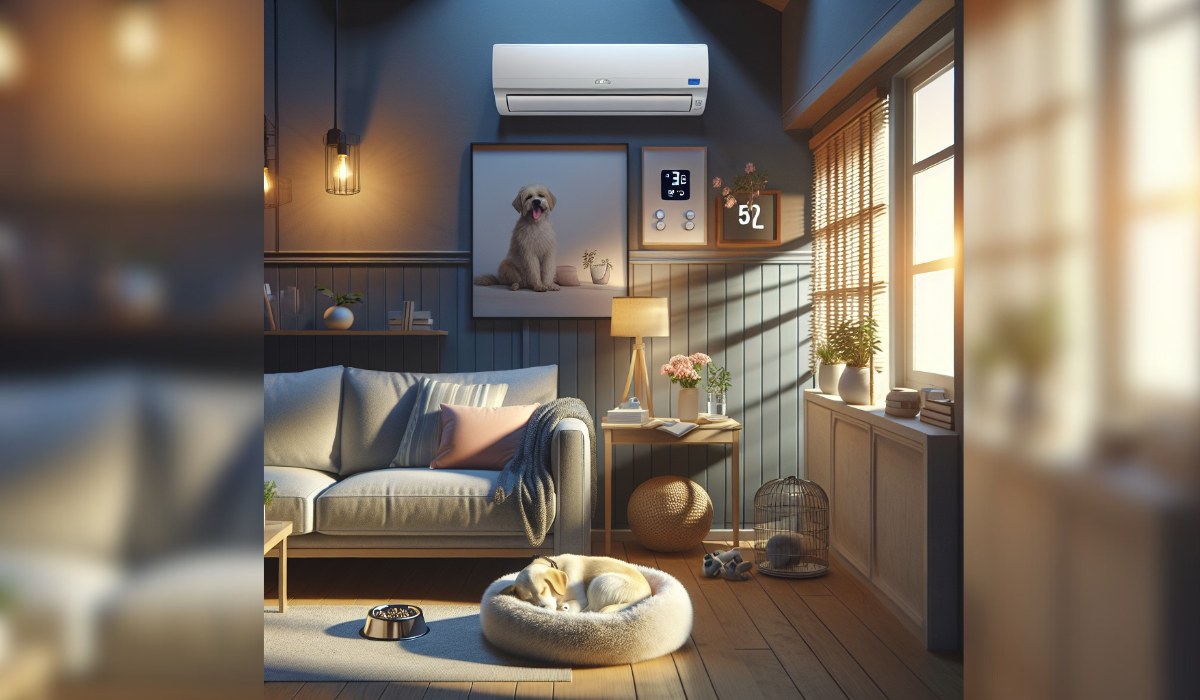Pets are the heart of urban India and with over 20 million pet dogs and cats in the country, numbers rising every year. Pet ownership has become a mainstream urban reality. Many traditional housing societies continue to impose restrictions on pets, sparking constant conflicts between pet parents and RWAs even after such a massive statistic. Developers are now positioning pet-friendly housing projects as a differentiator as they sensed both a market opportunity and a lifestyle need from this From Bengaluru to Mumbai, such projects are gaining traction among young buyers and nuclear families who see pets as part of the family.
Being a pet parent in an Indian city isn’t always easy. From constant complaints from fellow residents about barking dogs to disapproving glances in the lift, becoming a pet owner feels more like a self-caused battle between themselves and the restrictions in housing societies. Many resident Welfare Associations (RWAs) even attempt to propose to “ban” pets altogether despite clear Animal Welfare Board of India guidelines that say they cannot. In cities like Bengaluru, Gurugram, and Mumbai, residential projects are now marketing themselves as “pet-friendly”. These residential projects offer facilities like pet parks, walking trails and even grooming stations because pet care is quickly becoming a lifestyle necessity rather than just a luxury add-on.
See also: https://housing.com/news/pet-policy-in-housing-societies/
What is pet-friendly housing?
Pet-friendly housing is about more than just letting pets step inside apartments — it’s about building entire communities that embrace pets as part of the family. These projects are designed with both humans and their furry companions in mind, balancing convenience, safety, and lifestyle. Developers integrate dedicated infrastructure, such as pet parks, walking trails, grooming stations, and waste disposal systems, to make daily life easier for pet owners. Inside homes, thoughtful design elements like scratch-resistant flooring, non-toxic paints, and secure balconies ensure pets can explore safely without causing damage or getting hurt.
Unlike traditional housing societies, where pets are often viewed as a nuisance or even banned, pet-friendly communities prioritize inclusivity, creating clear rules and dedicated spaces that minimize conflicts between pet owners and other residents. The focus is on harmony and coexistence, so pets can enjoy freedom and play, while neighbors feel comfortable. Essentially, these homes reflect a modern, progressive approach to urban living, where pets are fully recognized as part of the household and community.
Special amenities in pet-friendly projects
Pet-friendly housing is not just about giving permission for pets to live inside apartments but also about creating an environment where both pets and their owners can thrive. Developers are now integrating a range of amenities that make life easier, safer, and more enjoyable for urban pet parents:
- Walking trails:
In pet-friendly housing, walking trails are like footpaths for cats and dogs to walk around as freely as the humans in their own space. These safe, green corridors allow dogs to trot happily and cats explore securely, away from noisy traffic and crowded streets and for their owners, it means no more hunting for a pet-friendly park outside and worrying about complaints from fellow residents.
This small shift in design makes everyday pet care easier, healthier, and far more joyful for everyone involved with segregated spaces for pets and their owners to walk and for pets to even interact with their furry playmates.
- Dedicated pet parks & green zones:
Creating dedicated pet parks inside housing complexes change everything for pet parents. With a safe, enclosed space where their pets can run, jump, and play freely, pet parents do not have to worry about leashes, traffic and unfriendly stares. Dogs can have their own outlet for energy and cats can have a chance to explore secure outdoor zones.
Owners get the peace of mind of watching their furry companions enjoy the outdoors without stress. These pet friendly spaces double as breathing spaces for societies, breaking up concrete with vibrant life. Even non-pet owners benefit from the greenery and sense of openness these parks add to the neighborhood.
- Pet grooming & care stations:
Pet care can be stressful in urban cities with traffic jams, scheduling salon visits and constant lookout for complaints and concerns from others regarding their pets. Pet-friendly housing solves this by offering on-site grooming salons and daycare centers. Many residential complexes in urban cities now offer pet grooming centers where one can simply take their pets to for a bath or a trim instead of driving across the city. This benefits busy professionals who appreciate daycare facilities, which are also provided in many of these new projects, that keep their pets safe and entertained while they’re at work.
These services include consistent care, convenience, and happier pets by saving time, reducing stress, and making life smoother for pet parents. It is almost like having a neighborhood spa and crèche for the pet furry friend.
- Pet waste disposal systems:
Cleanliness is often the first worry when more pets enter a community, however modern pet-friendly projects have a smart and efficient solution for that as well. Installed well-placed bins, composting options, and cleaning stations, make pet waste management simple and effective.
Pet parents are often nudged to be responsible because neighbors enjoy odour-free surroundings, and want common spaces to stay fresh for everyone. These initiates remove one of the biggest sources of friction in housing societies, that is, messy shared areas, and replace it with thoughtful planning. Therefore, being pet-friendly does not mean being or staying unhygienic but simply being careful. When designed well, these homes prove pets and cleanliness can coexist beautifully in shared spaces.
- Design features in apartments:
Inside apartments, pet-friendly design makes daily life smoother. Scratch-proof floors mean no stressing about playful claws, while balcony grills keep curious pets safe as they sunbathe. Non-toxic paints protect sensitive paws and noses, and some homes even carve out cozy pet corners for beds or feeding stations.
These details might sound small, but they transform living spaces into safe, stylish, and functional homes for both humans and pets. Moreover, they reassure buyers that modern interiors and pets can go hand in hand.
- Community events:
What truly sets pet-friendly housing apart is the community and the atmosphere it provides for both pets and the pet parents. Developers and residents often host adoption drives, pet playdates, and wellness workshops, creating events where both pets and people can bond. Owners meet neighbors who share their love for animals, swap care tips, and even discover new services.
In this process, pets also get the socialization they crave by interacting with fellow pets. These events make housing societies feel more like close-knit neighborhoods than just buildings and promote responsible ownership and compassion, reminding everyone that pets are part of the community too. It’s not just about homes with amenities.
Why is the demand for such communities rising?
1. Demographic trends
Urban India is witnessing an increase in the number of pets and the faces behind this rise in number are largely Millennials and Gen Z. These younger generations are embracing pet parenthood, often choosing dogs or cats as companions in their nuclear households. With busier work schedules but higher disposable incomes, many see pets as family members who add warmth and balance to city life.
This shift directly influences their housing choices and so, buyers now demand for communities that welcome pets instead of restricting them. Developers who understand this mindset are catering to a growing, influential demographic that values inclusivity, lifestyle amenities, and emotional connection in their homes.
2. Lifestyle & wellbeing
Pets have become anchors of emotional well-being for many city dwellers, especially after the pandemic highlighted the need for companionship and stress relief. Dogs and cats are not just animals anymore but are considered more like family, wellness partners, and even mental health boosters.
Housing structures that allow pets to live comfortably automatically translates to happier owners as well. From walking trails that encourage outdoor activity to grooming stations that ease pet care, pet-friendly homes support a balanced lifestyle.
3. Market opportunity
Pet-friendly housing is not just a feel-good initiative but also a strong business opportunity for the developers. In crowded real estate markets where projects often look similar, adding pet-specific amenities creates instant differentiation and might even become the USP (Unique Selling point) for some projects. From resale value to rental demand, pet-friendly homes often stand out, especially in metropolitan cities like Bengaluru, Gurugram and Mumbai where young professionals dominate the buyer pool.
These homes also appeal to NRIs who expect global standards of pet inclusivity. By integrating parks, grooming zones, or daycare facilities, developers not only meet lifestyle demands but also future-proof their projects against changing buyer expectations.
Legal and regulatory challenges
1. RWAs and pet restrictions
Even as pet-friendly housing grows, many Resident Welfare Associations (RWAs) still impose restrictions or outright bans on pets. Often, these rules exist because societies are unaware that the Animal Welfare Board of India (AWBI) explicitly states that pets cannot be prohibited in residential complexes.
This disconnect can create friction between pet owners and neighbors, leaving owners stressed and uncertain. By creating designated pet-friendly zones and clear guidelines, communities can uphold both residents’ rights and harmony, proving that inclusivity is possible without compromising society norms.
2. Noise and nuisance complaints
Pets can unintentionally cause conflicts, from barking dogs to stray cats or minor odors, triggering complaints in tight-knit communities. Managing this requires thoughtful planning and clear rules. Developers and RWAs often designate separate play areas, walking trails, and waste zones to minimize disturbances. Regular awareness programs help pet owners adopt responsible habits while assuring neighbors that their comfort is respected. Balancing pets’ freedom with community tranquility is key.
When handled well, these measures reduce complaints and create a harmonious living environment. In pet-friendly societies, thoughtful zoning and education turn potential conflict into coexistence, benefiting both pets and humans.
3. Municipal regulations
Cities like Delhi, Pune, and Chennai have municipal requirements for pet owners, including mandatory registration, vaccinations, and adherence to public health standards. Failing to comply can result in fines, penalties, or even legal disputes. For housing societies and developers, this adds another layer of responsibility. Ensuring residents follow municipal guidelines while providing convenient access to compliance information is critical.
Some developers even partner with veterinary clinics or municipal authorities to streamline registration and vaccination drives. Proper enforcement safeguards both pets and residents, while minimizing legal risks.
Housing.com’s POV
Pet-friendly housing is no longer a niche trend but is becoming a defining feature of modern urban living. As Millennials, Gen Z, and nuclear families increasingly see pets as family, residential projects are evolving to meet these lifestyle demands. Thoughtful infrastructure, amenities, and community initiatives create spaces where pets and owners thrive together, while legal compliance and education ensure harmony with neighbors. From the perspective of the developers, embracing this trend adds value, differentiation, and long-term appeal to their projects. Therefore, pet-friendly housing reflects a shift toward inclusive, well-being-focused communities, proving that thoughtful design can make cities more livable for both humans and their four-legged companions.
FAQs
What makes a housing project truly “pet-friendly”?
A genuinely pet-friendly housing project doesn’t just allow pets—it’s thoughtfully designed to make life easier for both pets and their owners. Such projects usually feature dedicated pet parks, walking trails, grooming areas, and proper waste disposal systems. Even apartment layouts are planned with safety and comfort in mind. Plus, there are clear community guidelines that ensure harmony between pet owners and residents who may not have pets.
Are there any legal restrictions on keeping pets in Indian apartments?
No housing society can completely ban pets. According to the Animal Welfare Board of India (AWBI), such restrictions are not legally valid. However, Resident Welfare Associations (RWAs) can set reasonable rules to maintain hygiene, reduce noise, and ensure safety. In some cities like Delhi, Pune, and Chennai, pet registration and regular vaccinations are also mandatory to promote responsible ownership.
Do pet-friendly homes cost more than regular apartments?
Pet-friendly homes might be priced a bit higher or come with slightly increased maintenance fees because of the added facilities and upkeep. But most pet owners find the benefits like convenience, a better quality of life for their pets, and even higher resale or rental value, well worth the extra cost.
Got any questions or point of view on our article? We would love to hear from you. Write to our Editor-in-Chief Jhumur Ghosh at jhumur.ghosh1@housing.com







